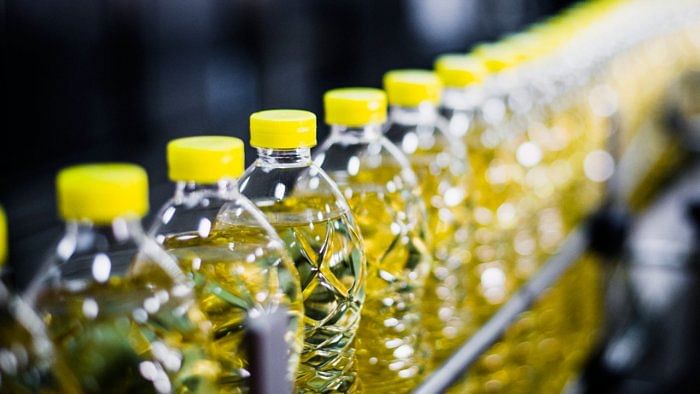
From October 1, the price of natural gas (NG) on supplies from fields given to Oil and Natural Gas Corporation (ONGC) and Oil India Ltd (OIL) on a nomination basis, as well as those given under the New Exploration and Licensing Policy (NELP), has been increased from the current $1.79 per million British thermal units (mBtu) to $2.9 per mBtu – up by $1.1 per mBtu. Going further, the price will rise to $5.93 per mBtu from April 2022 and $7.65 per mBtu from October 2022.
Under the NG pricing guidelines in vogue since November 2014, this price – known as the administered price mechanism (APM) -- is a weighted average of the price prevailing at four international locations -- the UK, US, Russia and Canada. The price is revised every six months. The projected steep increase in the price is due to the tightening of global demand-supply balance as the Covid impact subsides.
This will have a debilitating effect on the fertiliser industry, which alone consumes 37% of the domestic gas supply at around 77 million standard cubic meters per day (mmscmd).
Almost all of the urea production of about 24 million tons (mt) per year is based on gas. Of its total gas requirement, two-thirds is met from domestic/APM gas and one-third is imported LNG. For every dollar hike in gas price, the production cost of urea increases by Rs 1,800 per ton (24 mBtu for a ton of urea). For an increase of $1.1 per mBtu (from October 2021), the impact will be Rs 2,000 per ton. On two-thirds of the production or 16 million tons, this will be Rs 3,200 crore.
The price of imported LNG in the ‘spot’ market has gone up from around $5.5 per mBtu in April to the current $14 per mBtu – up by $8.5. This will increase urea cost by Rs 15,300 per ton (1800x8.5). On four million tons of urea from imported ‘spot’ gas (nearly 50% of total import; rest comes under long-term agreements at pre-fixed price), the extra outgo would be over Rs 6,000 crore. APM plus imported gas, the extra burden would be over Rs 9,000 crore.
At $7.65 per mBtu from October 2022 or a hike of about $6 per mBtu over the current level, the quantum of cost push would be Rs 17,000 crore (1800x6x16). The price of imported LNG in the spot market is also projected to increase to $20 per mBtu – or $14.5 higher over the current level. The extra outgo on this score would be Rs 10,000 crore. In sum, urea manufacturers will end up spending Rs 27,000 crore more.
Under the present controlled regime, the maximum retail price (MRP) of urea is controlled at a low level unrelated to the cost of production and distribution; the difference is reimbursed to the manufacturer as subsidy on ‘unit-specific and ‘actual’ basis. Thus, whenever, the price of gas goes up, the resulting additional cost is paid as a subsidy to the manufacturer.
During 2020-21, subsidy payments to urea producers were Rs 100,000 crore (including arrears from the previous year). For 2021-22, the budget allocation is Rs 59,000 crore. Thanks to an impending gas price hike, the actual outgo will be much higher; it will rise steeply from the second half of FY2023.
For now, huge relaxation in the fiscal deficit target -- 9.5% of GDP -- has given leeway to the government to continue the high subsidy on fertilisers (besides on food). But, sooner than later, it has to get back to fiscal tightening and rein in subsidies.
What is the way forward? The logical thing to do is to remove control on urea MRP and withdraw subsidies, albeit through manufacturers (the government may give subsidies directly to poor farmers). It will lead to a steep increase in MRP and a drastic fall in its use. In his “Mann ki Baat” (Nov 26, 2017), Modi had called for reducing urea use by 50% by 2022. There can’t be a more potent way of achieving this goal. Besides curbing its excessive use, reducing imbalance in NPK use ratio (currently, it is 6.7:2.4:1 against a benchmark of 4:2:1) and improving soil health, it will also reduce subsidy outgo by at least Rs 30,000 crore.
In this scenario, in view of urea demand plummeting to 15 million tons, domestic production can be slashed by 40%, which means this industry will need less gas by as much as 20 mmscmd – one-fourth of its domestic supply -- thereby easing pressure on the supply. This will force gas suppliers to be more responsible in fixing NG prices.
Concurrently, the government should implement reforms in the gas sector by dismantling APM, de-regulating gas import, and making handling and transportation infrastructure accessible to all suppliers on the ‘common carrier principle. This will create a ‘stable’ and ‘conducive’ policy environment for attracting long-term investment in gas exploration and production, thereby help improve the demand-supply balance with a favourable price effect.
(The writer is a Delhi-based policy analyst)
Watch the latest DH Videos here: